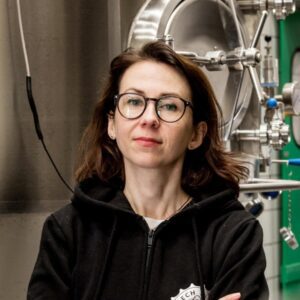Ostatnie lata to niezwykle intensywny rozwój technologii. Dziejąca się na naszych oczach rewolucja przemysłowa, wyprzedza prognozy konsultantów takich agencji strategicznych jak Gartner czy McKinsey. Rozwój technologii kształtuje nasze nawyki i wpływa w sposób pośredni lub bezpośredni na każdą branżę, nie omijając tych najbardziej generycznych, jak FMCG. Patrząc z perspektywy globalnej korporacji, ale również małej organizacji nie ma jednak wątpliwości, że jeśli firma chce prowadzić proaktywną walkę na skoncentrowanym rynku, musi być innowacyjna i rozumieć technologie, a te najlepsze z kolei przeznaczać część swoich budżetów na inwestycje zapewniające miękkie lądowanie podczas rynkowych dystrakcji.
W rozwoju organizacji, nie chodzi tylko o dostarczanie nowych produktów konsumentom, ale częściej o wykorzystanie obecnego potencjału portfolio – w obu tych przypadkach znacznie pomagać może technologia. W serii artykułów postaram się na kilku przykładach pokazać, jak zmienia się branża FMCG pod wpływem technologii – zarówno z perspektywy retailera, konsumenta oraz producenta.

Rysunek 1Proporcja wdrożeń nowych produktów na przestrzeni lat. [Mintel]
POV: producent
Na początek zajmę się tym, co technologicznie dzieje się po stronie producenta dóbr konsumpcyjnych. Należy mieć świadomość tego, że to zaledwie wycinek tego, co w rzeczywistości spotkać można w nowoczesnych organizacjach. Dodatkowo to, co warto podkreślić to fakt, że każde użyte technologie mają jakiś ściśle określony cel strategiczny dla firm– czy to ekonomiczny, środowiskowy, czy są po prostu testem.
Rozwój nowych produktów – badania marketingowe
Niezwykle ciekawą innowacją, która jest wykorzystywana na coraz większą skalę w badaniach marketingowych, sensorycznych, czy wyłapywaniu trendów rynkowych jest tzw. syntetyczny konsument. Na bazie modelu przygotowanego przez naukowców Stanford University, wspieranego przez sztuczną inteligencję (AI) i uczenie maszynowe (ML) udało się odwzorować wirtualnego konsumenta, który zachowuje się w bardzo podobny sposób do respondentów na badaniach focusowych, czy blind testach. To z jego pomocą firma Nestle wprowadziła na gigantyczny rynek chiński produkty linii Nestle Probiotic Supplements. Wykorzystanie AI pozwoliło dokładnie zbadać, jakie smaki i gramatury będą wpasowane w potrzeby konsumentów. Co więcej – przygotowanie strategii wdrożenia produktu i kanałów komunikacji też zostało dokładnie przebadane i zaproponowane przez AI. Oczywiście syntetyczny konsument ma również cienie: różni się od człowieka tym, że nie ma emocji i jest często bardziej racjonalny, co jak wiemy, ma niebagatelny wpływ na każdą decyzję zakupową. Potencjał tego raczkującego wciąż rozwiązania jest jednak bardzo duży.
Zanim dojdziemy do wniosku, że AI zabierze nam pracę zróbmy krok w tył na technologicznej osi czasu. 😊 Rozszerzona rzeczywistość (AR), czy wirtualna rzeczywistość (VR) to wciąż bardzo młode technologie, które chętnie wykorzystywane są w badaniach, angażowaniu konsumenta w markę lub dopasowywaniu mechanizmów promocyjnych. Po założeniu okularów VR, badany może otrzymać misję zakupu konkretnego produktu w wirtualnym sklepie. Jako rezultat marketer otrzyma informacje o ruchu gałek ocznych i heat mapę z gorącymi punktami badanego materiału i dowie się, na co badany zwraca uwagę wybierając konkretny produkt, jaki mechanizm promocyjny jest dla niego atrakcyjny oraz jak powinien wyglądać planogram.
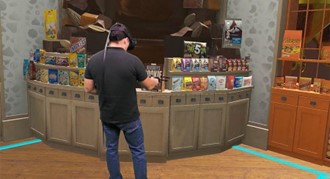
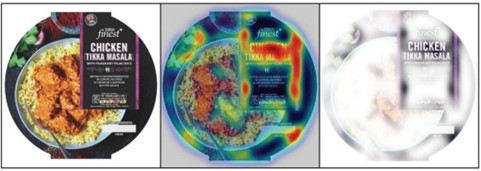
Rysunek 2 Przykład wirtualnego sklepu oraz badania grafiki opakowania [https://readysetvr.com/]
Produkty i ich opakowania:
Jak raportuje agencja badawcza Mintel, w ostatnich latach na rynku FMCG królują takie trendy jak personalizacja, dbanie o zdrowie i środowisko. Niewątpliwie dużym wsparciem w odpowiedzeniu na nie, mogą być nowinki technologiczne, które powodują że produkty są bardziej dostosowane do potrzeb konsumenckich, mniej kosztowne zarówno pod kątem rachunku ekonomicznego producenta, jak i kosztów środowiskowych.
Branża produktów świeżych, takich jak mięso czy ryby, wprowadza rozwiązania smart packaging. Jedną z ich funkcji może być pomoc konsumentom zorientować się, do kiedy zdatny do spożycia jest produkt, który kupują. Pomaga w tym umieszczenie specjalnego czipa na opakowaniu pakowanym w atmosferze ochronnej (tzw. MAP), który w prosty sposób pokazuje świeżość wyrobu.. To rozwiązanie dobre dla konsumenta, ale również całego łańcucha dostaw (supply chain).
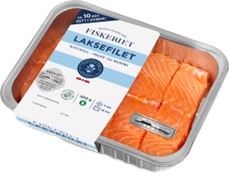
Rysunek 3 Opakowanie świeżych porcji łososia z miernikiem świeżości
Kontynuując tematy powiązane z szeroko pojętą logistyką, warto wspomnieć o pojęciu identyfikowalności (traceability). W związku z tym, że konsument coraz bardziej zwraca uwagę na czystą etykietę produktu, to producent dba o transparentność na każdym etapie jego powstawania. Przykładowo – po zeskanowaniu kodu QR na produktach łososi MOWI, konsument dowie się jaka była jego droga od ikry, po sklepową półkę, jak był karmiony, jaka była jego wielkość oraz kiedy dokładnie nastąpił ubój. Podobne rozwiązania można znaleźć na warzywach. Jest to w moim odczuciu coś przełomowego, producent poprzez zastosowanie zaawansowanych systemów Internet of things (IoT), czy uczenia maszynowego (ML) zapisuje w małym kodzie QR bardzo wiarygodne dane.

Rysunek 4 Kod kreskowy pozwalające na pełne traceability produktu.
Przetwarzanie przez producentów dużych ilości danych, pozwala im odpowiadać skutecznie na potrzeby konsumentów poprzez jeszcze bardziej spersonalizowane produkty i promocje. Pamiętacie pionierów z Coca-coli, którzy wprowadzili puszki z imionami? Niewątpliwie był to genialny marketingowo ruch. Obecnie obserwujemy znacznie więcej krótkich serii produkcyjnych, odpowiadających na tik-tokowy trend związany ze smakiem produktu, czy wypuszczeniem edycji limitowanej związanej z zaobserwowaniem specyficznej historii zakupowej konsumenta.
Kolejnym ciekawym i coraz bardziej skalowalnym trendem jest druk 3D żywności. Ma on spory potencjał związany m.in: z możliwością uzyskania unikalnych kształtów produktów, możliwego zmniejszenia problemu marnotrawienia żywności czy znajdowania alternatyw produktów dla wybranej grupy docelowej (np. mięsa dla wegan). Barilla – globalny lider na rynku makaronów – przeznacza swoje budżety R&D na rozwój tej technologii i zachęca konsumentów do współtworzenia nowych form produktów. Powstają w ten sposób naprawdę wymyślne kształty.. Gałąź druku żywności na pewno będzie wciąż się rozwijać, sama technologia stanie się coraz tańsza i wykorzystywana na masową skalę. O ciągłym postępie niech świadczy opracowywana na Massachusetts Institute of Technology (MIT) technologia druku 4D żywności – to tam naukowcy opracowali makaron, który w gotowym opakowaniu jest zupełnie płaski, a po wrzuceniu do wody dostosowuje się do kształtu zadanego przez drukarkę. Nie trudno wyobrazić sobie pozytywny wpływ tego rozwiązania na środowisko, może to pomóc wyeliminować problem przewożonego niepotrzebnie powietrza w opakowaniu produktu.
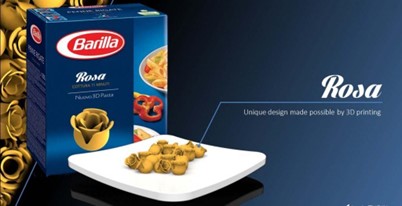
Rysunek 5 Konkurs na nową formę makaronu marki Barilla
Wykorzystanie danych: silniki AI, digital twin
Firmy często borykają się z problemem niewykorzystania w pełni danych, które posiadają w swoich wewnętrznych zasobach. Sami wiecie jak to jest – codziennie nowe dane sprzedażowe, prezentacje produktowe, zachowania nabywców, różne źródła informacji, wprowadzanie nowych pracowników, czy IT. Jak to wszystko łączyć? Coraz więcej organizacji buduje wewnętrzne silniki AI, które wykorzystują dane firmowe, odpowiadają na złożone firmowe pytania, czy są naszym asystentem AI przygotowującym prezentacje zgodną ze stylem naszej pracy. Krytyczna jest tutaj jakość danych i ich bezpieczeństwo. Rozwiązanie to rozwijane jest np. w firmie L’Oréal.
W jaki sposób przewidywać zmiany i testować je w bezpieczniejszym wirtualnym środowisku? Odpowiedzią może być tzw. cyfrowy bliźniak (digital twin). W dużym uproszczeniu chodzi o odwzorowanie fabryki w środowisku testowym, co pozwala na wcześniejsze wykrywanie błędów zanim się wydarzą, czy testowanie nowych rozwiązań bez konieczności przestojów linii produkcyjnej. Daje to również duże możliwości marketingowe do prototypowania, czy zwiększania jakości produktów. Technologie te wykorzystują globalni potentaci, tacy jak Coca-Cola, czy Heinz.
Podsumowanie
Technologia odmienia branżę FMCG, która tylko z pozoru wydaje się być konserwatywną. Konsument sięgając po produkt ulubionej marki, często nie ma świadomości zmian, które dzieją się na każdym etapie cyklu życia produktu, supply chain czy jego marketing mix. A to, że ich dynamika jest duża i są nieuchronne, przekonywali szefowie największych firm z branży podczas Consumer Goods Conference w Chicago w czerwcu br. Ciekawie w kwestii digitalizacji wypowiedział się założyciel chińskiej sieci sprzedaży Wumart Dr. Wenzhong Zhang: ‘We have to embrace digitalisation completely. This is not only for a better future, but also for survival.’ A więc technologiczna przyszłość już tu jest, przed pracownikami z branży spore wyzwanie: być otwartym na zmiany oraz dać sobie przestrzeń na testy i popełnianie błędów.
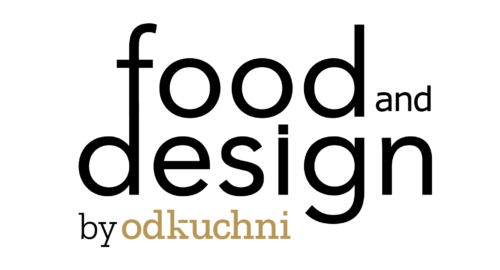
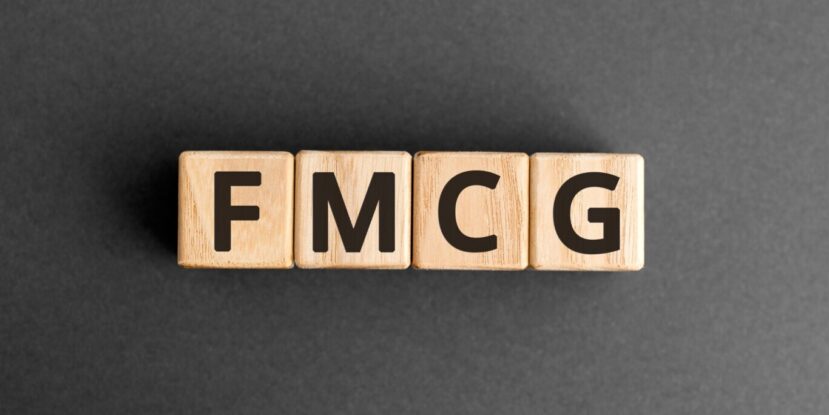


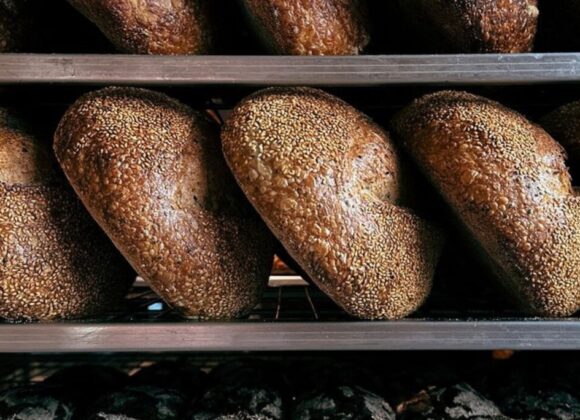





 Młodszy specjalista ds. komunikacji marketingowej i PR.
Młodszy specjalista ds. komunikacji marketingowej i PR.


 Absolwent Uniwersytetu Warszawskiego oraz Szkoły Głównej Gospodarstwa Wiejskiego. W branży HoReCa od ponad 10 lat. Przez lata związany z Grupą Trip, Sobienie Królewskie Golf and Country Club oraz restauracją Florentin w Warszawe.
Absolwent Uniwersytetu Warszawskiego oraz Szkoły Głównej Gospodarstwa Wiejskiego. W branży HoReCa od ponad 10 lat. Przez lata związany z Grupą Trip, Sobienie Królewskie Golf and Country Club oraz restauracją Florentin w Warszawe. Absolwentka Wydziału Architektury Politechniki Warszawskiej na kierunku Architecture for Society of Knowledge oraz Komunikacji Wizualnej na Politecnico di Milano. Specjalistka od budowania nastroju. Doświadczenie zdobywała w kraju i zagranicą podczas licznych warsztatów międzynarodowych (Sevilla, Lizbona, Florencja), stypendium na La Sapienza (Rzym) oraz pracując m.in. w Carmi e Ubertis i ADM Milano.
Absolwentka Wydziału Architektury Politechniki Warszawskiej na kierunku Architecture for Society of Knowledge oraz Komunikacji Wizualnej na Politecnico di Milano. Specjalistka od budowania nastroju. Doświadczenie zdobywała w kraju i zagranicą podczas licznych warsztatów międzynarodowych (Sevilla, Lizbona, Florencja), stypendium na La Sapienza (Rzym) oraz pracując m.in. w Carmi e Ubertis i ADM Milano.








 Menedżer z wieloletnim doświadczeniem w branżach kosmetycznej, spożywczej, dziecięcej. W trakcie swojej kariery związany z firmami takimi jak: L’Oreal, Samsung, Danone-Nutricia, Unilever. W ciągu swojego życia zawodowego odpowiadał między innymi za rozwój sprzedaży i contentu eCommerce w Polsce i krajach Europy Środkowo-Wschodniej.
Menedżer z wieloletnim doświadczeniem w branżach kosmetycznej, spożywczej, dziecięcej. W trakcie swojej kariery związany z firmami takimi jak: L’Oreal, Samsung, Danone-Nutricia, Unilever. W ciągu swojego życia zawodowego odpowiadał między innymi za rozwój sprzedaży i contentu eCommerce w Polsce i krajach Europy Środkowo-Wschodniej. 





